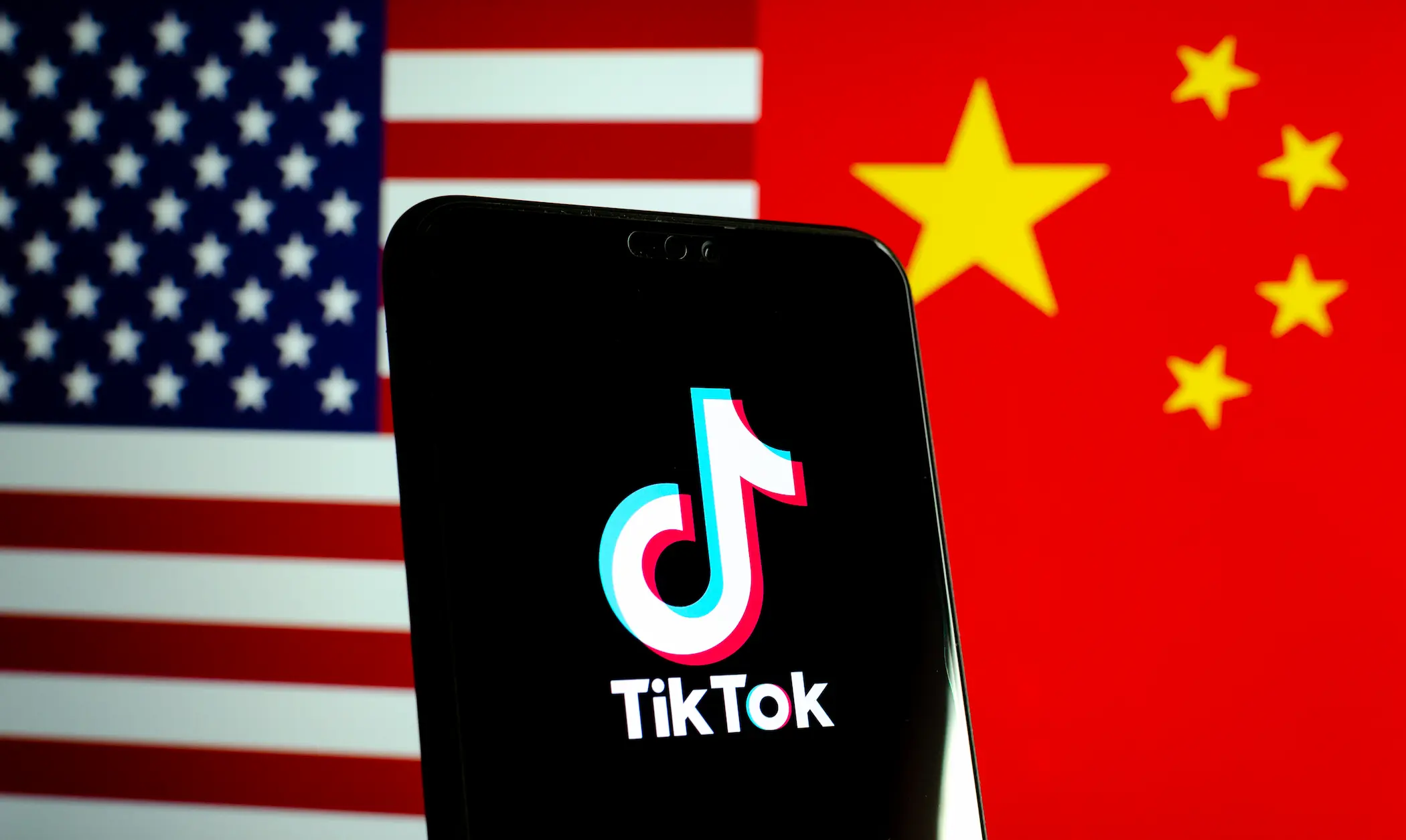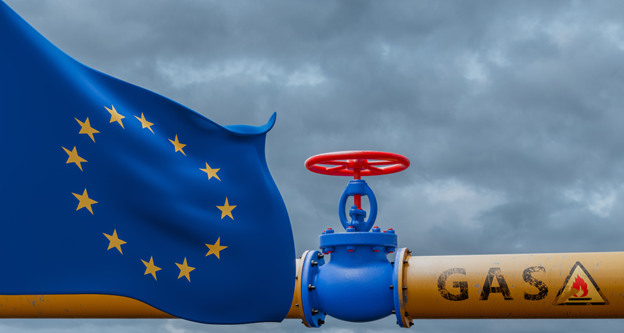The relationship between the United States and the European Union serves as a model for economic integration and collaboration in trade and investment between two non-regional parties. Both sides are considered each other's significant general trading partners when it comes to commercial relations for goods and services. Conversely, China surpassed the United States as Europe's top trading partner for goods in 2020. In 2022, trade in goods between the two sides exceeded $900 billion, while trade in services exceeded $500 billion.
Despite its strength, this relationship has its share of trade disputes, primarily fuelled by the growth of bilateral trade and each side's desire to further enhance its surpluses by entering the other's market. These disputes sometimes even reached the World Trade Organisation (WTO), most recently in 2018 when the US imposed 25% and 10% tariffs on imports of steel and aluminium from the EU based on national security grounds, to which the EU replied in kind.
However, the nearly 17-year-old dispute for control of the world's civil aviation industry between the two giant companies, American Boeing and European Airbus, was the most intense ever. Each side, "the United States and the European Union," made an effort to provide government aid to its company against the other. As the dispute escalated, both sides imposed retaliatory tariffs on a portion of each other's imports, which by 2021 totalled $11.5 billion. Eventually, in light of their disagreement with China, the two sides agreed to a trade truce, which stopped the dispute.
With every dispute between the two sides, the world hangs its breath due to their significant impact on the international economy, the shift forced by such a conflict in supply chains and the potential global slowdown. The world has been concerned about a similar situation since US President Joe Biden successfully passed his Inflation Reduction Act of 2022 in August 2022, which heralded the beginning of a prolonged war on both sides of the Atlantic in a world already dominated by trade and military conflicts between the East and the West.
This article analyses the American Inflation Reduction Act and predicts how this Act will impact the global economy in light of the current unstable economic situation.
Inflation Reduction Act of 2022
In 2022, the United States experienced one of the worst inflationary surges in the last 40 years as a result of the aid that the administration of former President Donald Trump provided citizens as incentives in response to the COVID-19 pandemic. This surge was combined with the commodity supercycle and the Russian-Ukrainian war, leading to sharp increases in food and energy prices. This pushed inflation levels close to 9%, the highest rate since the 1980s. Thus, the Biden Administration intervened by passing this Act to help the U.S. Federal Reserve’s efforts to contain this massive inflationary surge, as indicated in the following figure:
The Act’s primary goal is to reduce the medium-term impact of fluctuating fossil energy prices on the US economy, which is the primary driver of inflation. This is done by reducing the use of fossil energy and promoting the use of renewable energy produced locally and not directly affected by the prices of fossil products, whether by raising renewable energy products or facilitating their use in homes or cars. But, of course, this can only occur if the cost of producing these energies decreases, whether from the sun or the wind. Consequently, out of the $777 billion the Act authorised to combat inflation, a sizeable federal subsidy of $386 billion was provided for energy and climate. The following table shows the allocations for energy and climate subsidies:
The above table outlines the incentives and exemptions the Act provides for businesses that utilise renewable energy or manufacture products they may need, notably electric automobiles and fuel stations, until 2031. The Act, however, only allowed US-made goods to receive this subsidy. As such, whether on purpose or not, the Act poses a dual threat to the European energy industries at two levels:
Firstly, The US products will be more competitive than their European counterparts in domestic and international markets. This is because the US companies will benefit from the massive subsidies and extensive tax breaks, ultimately driving down the cost of US goods. Thus, the US companies will make more money at the expense of their European competitors.
Secondly, European companies want to take advantage of these hefty subsidies and substantial exemptions. This will drive some European companies to relocate their factories, or portions of them, to the United States, abandoning European territories, reducing job prospects and the additional value the European economy gains.
What’s worse is that European products are under intense pressure, with the high gas bill as the primary contributor. As the US’s costly liquefied gas replaced its affordable Russian equivalent, the price of one unit of energy increased almost four times. Hence, the European product is now more expensive than its US counterpart, which uses cheaper gas that has not been liquefied or transported, so its price is not increased.
The European Response
Due to the high prices of liquefied gas sold by the United States to Europe, the European leaders had expressed their strong dissatisfaction with US energy pricing policies even before the Inflation Reduction Act was passed. The US took advantage of the tension between Russia and Europe and the Europeans’ attempts to make up for Russian losses from all manufacturers, particularly the US, to increase its profits. The following figure compares the cost of gas in the US with Europe:
The timing of the new Act’s passing shocked European countries, regardless of the policies themselves. The Europeans began to demonstrate that the US was destroying and obstructing the expansion of the European automotive industry by exploiting their vulnerability due to the conflict. In this respect, the remarks of European leaders on the Act were remarkably frank, particularly those of French President Emmanuel Macron, who visited the US to voice his displeasure with the Act but to no avail. Before him, the European Commission President spoke out against the unfair practice of the US subsidy and discrimination at the Davos Forum, but the US did not respond. On the contrary, the US officials under the president’s leadership emphasised that it would take much to change the Act, especially following the lengthy and marathon negotiations between the two parties to ratify it from the beginning. In addition, the US president has no intention of surrendering the most significant accomplishments of his term to appease the Europeans.
The only way the Europeans could have dealt with the US stubbornness was to revert to their previous stances in the civil aviation conflict when they had met the US obstinacy with measure-for-measure tactics. On February 1, 2023, the European Commission announced The Green Deal Industrial Plan, which offers aid and incentives totalling around €372 billion through 2030, nearly equal to the volume of the US subsidies. This initial step was taken in response to the US Act to reassure European companies and stop them from planning any relocation to the US. In addition, the European Commission will allocate another €40 billion to the Innovation and Creativity Fund to further promote the already-existing industry.
Implications for the Global Economy
The war on both sides of the Atlantic will continue beyond the steps taken. The previous actions taken by both sides are viewed as the first salvo in a prolonged war that might last for years and involve more parties that such actions will impact. This war will addition, infect the rest of the global economy. The implications are divided as follows:
More Trade Tensions
Under more government subsidies from both sides, they will impose protective and punitive tariffs on imported goods when subsidised goods enter their markets to protect the local industry. As a result, the trade exchange between them regarding subsidised goods will decrease; thus, the two sides will exert pressure on one another by raising fees or increasing subsidies. Consequently, the two sides will resort to the WTO, which is, in turn, suffering due to the absence of its top judicial bodies that frequently resolve trade disputes, which will prolong the conflict over an extended period.
Drawing More Parties to the Conflict
Manufactured goods that benefit from government subsidies will not just be exported to markets across both sides. Still, they will reach markets in countries offering substantial government subsidies, including China, Japan, South Korea, and Britain. Hence, these countries will provide comparable subsidies and levy duties on the goods of both sides and other parties.
Slowdown in Global Trade
As previously mentioned, trade between the US and Europe is far more extensive than between the US and China. US exports to China fell by 26.3% due to the trade war, while exports to the rest of the world only grew by a modest 2.2%. On the other hand, China’s exports to the US fell by 8.5%, while exports to the rest of the world rose by 5.5%. Therefore, even if the trade war is limited to the US and Europe, it may have an impact that exceeds tens of billions in parallel to the effects of the conflict between China and the United States of America.
In conclusion, we are witnessing the beginning of a trade war between the two largest trading partners in the world. This war will involve the other significant players in the global trading system. If this conflict is not contained sooner, it will last for a very long time, especially since green technology, whether in the form of electric vehicles or the generation of renewable energy, is still in its early stages of development. Hence, these countries realise that the first to capitalise on these opportunities will earn tens or perhaps hundreds of trillions of dollars over the next thirty years, at the absolute least, before new technologies are developed. Finally, the technologies that will grow over the next decade will serve as the foundation of the global economy, at least through 2050.
References
Carriages preview | Legislative Train Schedule [Internet]. [cited 2023 Feb 16]. Available from: https://www.europarl.europa.eu/legislative-train/theme-a-stronger-europe-in-the-world/file-eu-us-trade-talks
Boeing-Airbus trade row set to end after 17 years – BBC News [Internet]. [cited 2023 Feb 16]. Available from: https://www.bbc.com/news/business-57484209
What the Inflation Reduction Act could mean for the economy [Internet]. [cited 2023 Feb 17]. Available from: https://www.jpmorgan.com/wealth-management/wealth-partners/insights/what-the-inflation-reduction-act-could-mean-for-the-economy
What’s in the Inflation Reduction Act (IRA) of 2022 | McKinsey [Internet]. [cited 2023 Feb 17]. Available from: https://www.mckinsey.com/industries/public-and-social-sector/our-insights/the-inflation-reduction-act-heres-whats-in-it
Why cheap US gas costs a fortune in Europe – POLITICO [Internet]. [cited 2023 Feb 17]. Available from: https://www.politico.eu/article/cheap-us-gas-cost-fortune-europe-russia-ukraine-energy/
Europe’s not happy with Biden’s Inflation Reduction Act – The Washington Post [Internet]. [cited 2023 Feb 17]. Available from: https://www.washingtonpost.com/politics/2023/01/17/europe-not-happy-with-bidens-inflation-reduction-act/
Biden keeps ignoring Europe. It’s time EU leaders got the message – POLITICO [Internet]. [cited 2023 Feb 17]. Available from: https://www.politico.eu/article/joe-biden-ira-inflation-reduction-us-ignores-eu/
The Green Deal Industrial Plan: putting Europe’s net-zero industry in the lead [Internet]. [cited 2023 Feb 17]. Available from: https://cyprus.representation.ec.europa.eu/news/green-deal-industrial-plan-putting-europes-net-zero-industry-lead-2023-02-01_en












Comments